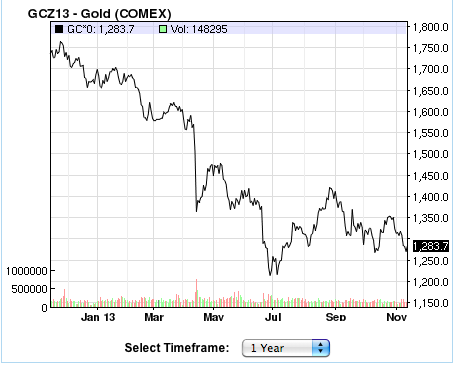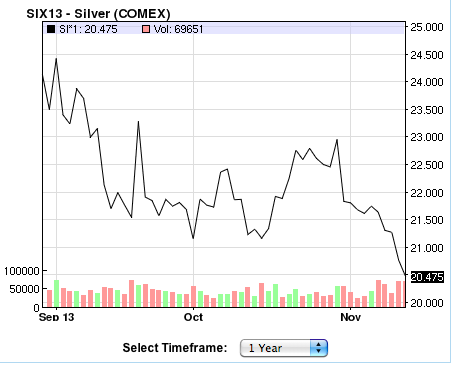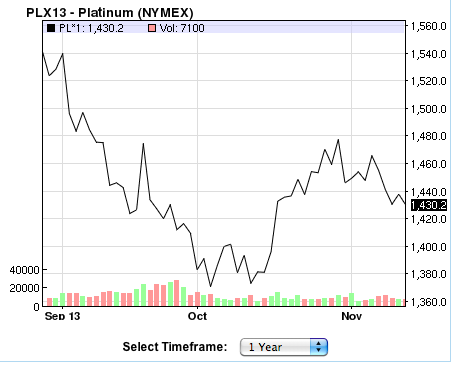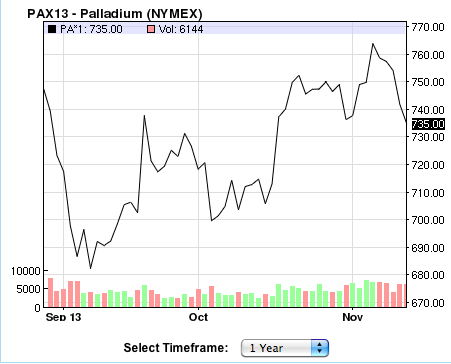
The precious metals market has been racked with great volatility in gold and silver this year, with gold dropping from its record-breaking position at nearly $2,000 per ounce down to a less sensational $1,300 per ounce as of this fall. Silver has experienced a parallel decline, hovering around $20 per ounce this fall, compared with $32 per ounce at the beginning of the year.

Platinum and palladium, however, have not experienced the same dramatic shifts as their more prominent cousins. Platinum and palladium coexist in the same precious metals family as gold and silver but have some notable differences. While gold and silver have been experiencing one of the worst drawdowns in history this year, platinum and palladium have not. One major difference accounts for these metals’ comparable stability – how these metals are used and conceptualized.

In the past decade, and the past 5 years especially, gold has stolen the spotlight because investors started recognizing that, in a time of worldwide economic turmoil, the yellow metal could be used as an alternative currency and a hedge fund against economic disaster. While major first world currencies are flailing, gold will always have value. Therefore, a huge surge in the price of gold happened between about 2006 and 2012, with gold reaching its record-breaking high of $1,917 in August of 2011. Silver trends have historically ridden on the coat tails of gold, and silver followed suit with the same movement as gold at a lower price point.
Buying gold also became much easier when gold ETFs (Exchange-Traded Funds) entered the market. Before this decade, buying gold was somewhat cumbersome, since the only options were to purchase physical bullion or engage in complex derivative strategies in the commodities market. With ETFs, buying and selling gold became more widely accessible and the market was essentially open to high liquidity. Silver followed suit with its own ETFs. So, traders were now viewing gold and silver as less of a precious metal and more as money itself.

Platinum and palladium did not experience the same sort of upward swing because the appeal of platinum and palladium is mainly driven by industry, but now neither are they experiencing the dramatic decline. The dichotomous nature of the precious metals market is marked by one main factor: gold and silver have been recently traded as currency, and platinum and palladium still act as commodity.
While gold and silver are stored in vaults and traded as currency, platinum and palladium are primarily used in industry. The demand, therefore, is not based on market speculations and economic fears like gold and silver, but on the needs of the industries that use them. Both platinum and palladium are primarily used in the automotive industry, which has generally constant demand. Over half of all platinum mined is used for catalytic converters, and more than 75% of all palladium is used in car exhaust filters, both necessary ingredients for a working automobile. Another third of the platinum mined is used in jewelry, and the remaining 10% or so is kept by investors as a source of value. The same holds true for palladium; these precious metals are not as widely viewed as investments.

Yet, they can be. Platinum and palladium may be used in different capacities than gold or silver, which both are used in jewelry and in some industries, but they are still precious metals and are still eligible for investment accounts like a precious metals IRA. The market behaviors of platinum and palladium are not as volatile as gold and silver, yet they are still considered investment-quality metals.
Looking at the trends of the past year, platinum and palladium have clearly outperformed their sister metals of gold and silver. Platinum may have taken a dip in October, but is gaining momentum again. Demand factors for platinum include labor unrest in South Africa that causes supply disruptions and increased production in the automotive industry. The automotive factor also influences palladium, and can account for its upswing that outshines all three of the others. Palladium is experiencing a performance not seen since 2012.
The bottom line is that as long as the automotive industry needs metals to build with, platinum and palladium should have a constant demand, while gold and silver depend upon the fluctuations of world economies. A precious metals IRA accepts all four types of precious metals, with some restrictions.
